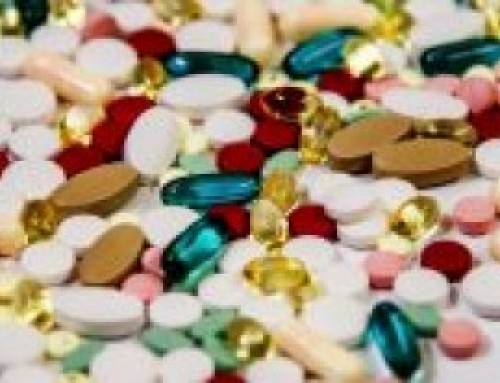Many of the ingredients used in the cosmetic products are actually industrial strength chemicals, solvents and petroleum by-products. This is even true for many of the most expensive products available and products being promoted as “natural”. The truth is that many of the ingredients used widely by cosmetic industry , reason of being used is not that they are good for your skin.
Regulatory bodies and truth about cosmetic ingredients
Shweta Kapoor*, Swarnlata Saraf
*Institute of Pharmacy, Pt. Ravishankar Shukla University, Raipur (C.G)-492010
email- kapoorsk@gmail.com
INTRODUCTION
Cosmetics, preparations externally applied to change or enhance the beauty of skin, hair, nails, lips, and eyes. The use of body paint for ornamental and religious purposes has been common among primitive peoples from prehistoric times. Ointments, balms, powders, and hair dyes have also been used from ancient times. Many cosmetics originated in Asia, but their ingredients and use are first recorded in Egypt. By the beginning of the 21st century the cosmetics industry was mostly run by large corporations and had become a multibillion dollar enterprise.1.The skin’s primary function is to protect the body from environment. The primary causes of skin damage and ageing are exposure to sunlight—UVB and UVA—oxidation and inflammation of the skin, decreases in supportive collagen, loss of muscle tone, and dryness2. Cosmetics widely used to maintain the healthy skin. Most cosmetic products contain a combination of ingredients such as emulsifiers, preservatives, thickener, colour, fragrance, UV filters (sunscreens), humectants, occlusive agents and pH stabilizers. Many of the ingredients used in the cosmetic products are actually industrial strength chemicals, explosive solvents and petroleum by-products. This is even true for many of the most expensive products available and products being promoted as “natural”.
Common consumer never bother about the ingredients present in the cosmetics the people are not aware that these ingredients can be harmful to their health. Although every country has made their own legislation to control over cosmetic ingredients, they have prohibited the some of the ingredients which found to be toxic. The truth is that many of the ingredients used widely by cosmetic industry , reason of being used is not that they are good for your skin. They are used because they are cost effective (cheap), because they facilitate the manufacturing process, and because they facilitate a product shelf life of several years. Regulatory bodies of different countries continuously giving warnings about toxic ingredients, there are also guidelines for the safety of cosmetic products. The aim of this paper is to reveal the truth of cosmetics ingredients and role of regulatory bodies in front of consumer, cosmeticians, academicians and chemists .{mospagebreak}
REGULATORY BODIES
On the 11th September 2004 The Cosmetic Products (Safety) Regulations 2004 came into force. The Regulations bring together the old cosmetic regulations and their amendment regulations, and implement the Seventh Amendment to the EC Cosmetics Directive. This legislation now forms The Cosmetic Products (Safety) Regulations 2004. The Regulations establish an offence for supplying, offering to supply, agreeing to supply, exposing for supply or possessing to supply cosmetic products which are liable to cause damage to human health when applied under normal or reasonably foreseeable conditions of use. In addition the regulations prohibit a number of substances from use in cosmetic products and also restrict certain substances including preservatives, colouring agents, and UV filters. It is a requirement that the supplier of the cosmetic within Europe keeps aProduct Information Package. This must be readily accessible to the enforcement authorities (e.g. Trading Standards). It must contain the following information: – Product Composition(Typically this would be the INCI name, CAS number and concentration.) Under the FD&C Act, a cosmetic is adulterated if, among other reasons, it bears or contains any poisonous or deleterious substance which may render it injurious under the labeled conditions of use, or under customary or usual conditions of use. Cosmetic products and ingredients are not subject to FDA premarket approval authority, with the exception of color additives. Cosmetic firms are responsible for substantiating the safety of their products and ingredients before marketing26 fragrance compounds have been found to be allergens that can produce allergic reactions to individuals sensitive to these compounds. The presence of any of these 26 fragrances above certain threshold limits must be declared in the ingredient list. All sources of these fragrances must be taken into account. Normal ingredient labelling rules apply, with the fragrances listed in the main body of the ingredient list. The threshold limits are as follows:Leave on products 0.001%.Rinse-off products 0.01%3.With a view to strengthening supervision and management of the cosmetics market and aligning with international standards, the Ministry of Health (MOH) has released the Hygiene Standard for Cosmetics (2007 Edition) to be effective from 1 July 2007. The new rule contains a revised list of prohibited and restricted substances. First, an additional 790 substances have been included in the prohibited list based on the EU’s Cosmetics Directive, bringing the total number of prohibited substances to 1,286. Second, the substances on the List of hair dye agent Ingredients issued by MOH in 2005 have been added to the restricted list. Third, rules restricting the use of certain ingredients contained in preservatives, sun screen agent, colouring agent and hair dye agent have been removed, added or modified.The Hygien Standard for Cosmetics (2002 Edition) issued and implemented by MOH in 2002 primarily contains a list of prohibited and restricted ingredients, toxicity assessment methods and micro physical/chemical analysis methods. As safety assessment methods and testing technologies for cosmetics have advanced steadily in recent years, the technical standards contained in the 2002 version can no longer meet the market supervision requirements of the EU and US4. The global currents about the safety evaluation methods of special mention is the Seventh Amendment of EU Cosmetics Directive that provides the animal experiments prohibitions (animal testing ban) and also the sales prohibition of the product that is containing the ingredients which is evaluated by using the animal (marketing ban)5. Scientific Committee of Cosmetics and Non-Food Products (SCCNFP) has proposed and told the importance of safety guidelines for the cosmetic products.The system for all ingredients indication on cosmetics’ products was introduced in 20016. Among the ingredients in personal care products, the group found known carcinogens, reproductive toxicants, harmful impurities and untested chemicals. Of the 10,500 chemical ingredients used in personal care products, just 11 percent have been safety assessed, the report found – and the assessments were not conducted by government officials, but by a panel funded by manufacturers, the Cosmetic Industry Review board7. SAFETY ASSESSER RESPONSIBILITYThe safety assessor is responsible for determining:Whether or not the ingredients present in the formula meet the requirements of the legislation in respect of the concentration for authorized substances, absence of substances prohibited by the law and, more generally, in respect of all legal requirements.
- Whether or not particular endpoint(s) have to be considered for a given ingredient.
- Whether the data available are relevant and sufficient.
- Whether or not interactions of toxicological relevance and/or modifications to penetration are likely to occur.
- Whether or not complementary data are needed either on ingredients or on the finished product.
The safety assessor must
- Recognized competence and ethics in the field.
- Access both to the toxicological and to the analytical information pertinent from a safety view point.
- {mospagebreak}
SOURCES OF SAFETY INFORMATION
Sources from which of safety information for cosmetic Ingredients can be collected.
- Cosmetic Ingredient Review (CIR) – CTFA (Canadian Cosmetics, Toiletries and Fragrances Association)
- Prohibited Ingredients and other Hazardous Substance – FDA (Food and Drug Administration)
- California Proposition 65 List – California EPA (European Public Health Alliance)
- List of Suspected Carcinogens – NTP (National Toxicology Programme)
- Federal Insecticide, Fungicide and Rodenticide Act – EPA Industry Guidelines to Restrict Ingredient Usage – IFRA (International Fragrance Association)
- Approved Colorant list (limited) – FDA
- Endocrine Disruptor Screening Program – EPA
- Voluntary Children’s Health Chemical Evaluation
- Program – EPA
- European Cosmetic, Toiletry and Perfumery Association (COLIPA) – EU (European Union)
- Pubmed – Toxnet
COSMETIC INGREDIENTS
Common ingredients as preservatives, emulsifiers, colour, thickeners, humectanct etc, that are found to be toxic but widely used in personal skin care product’s found to be toxic , although some of them are banned by cosmetic lesgislations (Table 1). Ingredients prohibited and restricted by FDA Regulations are shown in table 2. The principal ingredients in sunscreens are usually aromatic molecules conjugated with carbonyl groups. This general structure allows the molecule to absorb high-energy ultraviolet rays and release the energy as lower-energy rays, thereby preventing the skin-damaging ultraviolet rays from reaching the skin. So, upon exposure to UV light, most of the ingredients (with the notable exception of avobenzone) do not undergo significant chemical change, allowing these ingredients to retain the UV-absorbing potency without significant photo-degradation8. UV filters and their combinations have frequently been a subject matter of deliberations within the Committee for Cosmetic Products (Cosmetics Committee) at the Federal Institute for Risk Assessment (BfR). The Federal States Baden-Württemberg and Bayern have reported several problems related to UV filters in sun protection products9-14.1. Combined effects of UV filters and a summation limit value for UV filters,2. A limitation for the sun protection factor,3. The photostability of UV filters and4. The oral toxicity of UV filters in lipsticks and lip care products.Bureau of federal regulation (BfR) recommends using combinations of UV filters and ingredients in the formulations of cosmetic products in a manner that enables to keep the amount of individual filters and also the sum of the filters used for the protection aimed as low as possible. At present there are no hints with respect to a concrete risk for cumulative toxic effects or increased skin penetration in products with a UV filter combination15. The daily amount of skin care products applied (leave-on products: facial cream, body lotion, deodorant and hair products) amounts to 13.5 g according to estimates of SCCNFP16 . Permitted UV filters are listed in Annex VII of the Cosmetics Directive and in Annex 7 .Cosmetics UV filters that are used as ingredients in the sunscreen that are approved and disapproved on the basis of the effect produced by them. (Table 3-4).CONCLUSIONThis review give the brief outline of cosmetic regulatory bodies that paly a keyr role to control over ingredients, that are toxic. The paper reveal information on specific ingredients and products that are dangerous to consumers and aim is to protect the health of consumers and workers by requiring the health and beauty industry to phase out the use of chemicals that are known or suspected to cause cancer, genetic mutation or reproductive harm.
BIBILOGRAPHY
- See L. Woodhead, War Paint, 2004.
- Judy Davis, Chris o Brein. Ingredients for skin care: a new layer in anti-ageing. Functional foods and nutraceuticals, 2003.
- Darbre. A study detected parabens in breast tumors. Journal of Applied Toxicology, 2004.
- New Cosmetics Rule Bans 790 Substances, Business Alert – China. Issue 02, 01 February, 2007.
- Toyoda Hidekazu . Global Currents and Problems Concerning the Risk Assessment for Cosmetics .Journal of Japanese Cosmetic Science Society, 28, 4, 288-291, 2004.
- Teshima Kunikazu. The Risk Assessment for Cosmetics and Cosmetic Ingredients. Journal of Japanese Cosmetic Science Society, 28, 4, 285-287, 2004.
- Monica Guarinoni .Skin Deep: an assessment of ingredients in personal care products, by European Public Health Alliance , 39-41 Rue d Arlon, B1000 Brussels, Belgium, 10, June 2004.
- http://www.fda.gov/ohrms/dockets/dailys.
9.Gonzenbach H, Berset G, Deflandre A, Mascotto RE, Jolley JDR, Lowell W, Pelzer R,Stiehm T. Proposed protocol for determination of photostability. Part I: Cosmetic UVFilters.International Journal of Cosmetic Science, 18, 167-177, 1996.
- Herzog B, Sommer K. Investigations on Photostability of UV-Absorbers for Cosmetic Sunscreens. Proceedings of the 21st IFSCC International Congress, 2000.
- Johncook W. Sunscreen interactions in formulations. Allured’s Cosmetics and Toiletries Magazine, 114, 9, 75-82, 1999.
- Nohynek GJ. Benefit and risk of organic ultraviolet filters. SÖFW-Journal , 127 ,7, 20-23, 2001.
- Rünger TM. Role of UVA in the pathogenesis of melanoma and non-melanoma skincancer. Photodermatol. Photoimmunol. Photomed., 15, 212-216, 1999.
- Schwack W, Rudolph T. Photostabilität und Photoreaktionen von UV-Filtersubstanzen in Kosmetika. GIT Fachz. Lab.4, 373-377, 1996.
- Federal Institute for Risk Assessment (BfR), UV-Filters in Sun Protection ProductsOpinion of the Federal Institute for Risk Assessment, 6th August.
- SCCNFP/0321/00 final: Notes of guidance for testing cosmetic ingredients for their safety evaluation, 2003. {mospagebreak}
Table 1 List of common ingredients widely used with their toxic effects
| S.No | Ingrdients | Toxic effect |
| 1 | Abietic Acid | Allergic reactions |
| 2 | Acetamide Mea | cancer |
| 3 | Acrylic Acid | Toxic by skin absorption |
| 4 | Aluminum Acetate | Sloughing of the skin |
| 5 | Arachidonic Acid | Alter the skin’s natural immune response |
| 6 | Benzophenone-2 | Contact sensitivity |
| 7 | Benzalkonium Chloride | Allergic conjunctivitis |
| 8 | Beta-Naphthol | Fatal poisoning, eye injury, vomiting |
| 9 | Bithionol | Skin swelling |
| 10 | Borates | Abraded skin, Acute poisonings |
| 11 | Butylene Glycol: | Depression, vomiting, drowsiness, coma |
| 12 | Calcium Chloride | Stomach , heart disturbances |
| 13 | Calcium Hydroxide | Swelling of the glottis |
| 14 | Calcium Sulfate | thyroid problems |
| 15 | Carbolic Acid | Nausea, vomiting, circulatory collapse |
| 16 | Ceresin | Allergic reactions |
| 17 | Dehydroacetic Acid | Impaired kidney function |
| 1 | Diethanolamine | Allergy, eye irritation, dryness of hair,skin cancer |
| 8 | Diethylstilbestrol | Cancer |
| 19 | Epichlorohydrin | Kidney damage |
| 20 | Ethoxyethanol | Central nervous system depression, kidney damage |
| 21 | Ethyl Hexanediol | Birth defects |
| 22 | Ethylene Dichloride | Stomach cancer |
| 23 | Ethylene Glycol | CNS depression, vomiting, drowsiness, coma |
| 24 | Ethylenediamine tetraacetic acid | Asthma, skin rashes |
| 25 | Euxyl K 400 | Allergic contact dermatitis |
| 26 | Glycolic Acid | Irritation |
| 27 | Morpholine | Kidney ,liver injury |
| 28 | Methylisothiazolinone | Moderately toxic |
| 29 | Nickel Sulfate | Kidney damage, nervous depression |
| 30 | Nitrobenzene | Headaches, drowsiness, Poisonous |
| 31 | Parabens | Allergic reactions ,skin rashes |
| 32 | Petrolatum | Dryness , chapping |
| 33 | Phenol | Nausea, vomiting, circulatory collapse |
| 34 | Polyacrylamide | Highly toxic, irritating to the skin |
| 35 | Polyvinylpyrrolidone | Gas ,fecal impaction |
| 36 | Potassium Hydroxide | Tumor |
| 37 | Propylene Glycol | Rashes, dry skin, surface damage, eye irritation |
| 38 | Quaternarium-15 | Dermatitis |
| 39 | Salicylic Acid | Vomiting, acidosis, mental disturbances |
| 40 | Sodium Dehydroacetate | Allergic skin reactions |
| 41 | Sodium Lauryl Sulfate | Irritations, skin rashes, hair loss, scalp scurf |
| 42 | Stearalkonium Chloride | Allergic reactions |
| 43 | Synthetic Colors | Carcinogenic |
| 44 | Synthetic Fragrances | Headaches, hyperpigmentation, violent coughing |
| 45 | Trichloroethane | Vomiting to death |
| 46 | Triethanolamine | Eye problems, dryness of skin |
| 47 | Trioctanoin | Skin irritation |
| 48 | Tripolyphosphate | Esophageal stricture |
{mospagebreak}
Table 2: Ingredients Prohibited and Restricted by FDA Regulations
| Ingredient | Side effects | Used in | Jurisdiction | |
| 1 | Bithionol | photo-contact sensitization | detergent bars, shampoos, creams, lotions | March 15, 1968 |
| 2 | Mercury | potent allergenskin irritation | creams and lotions, hair straighteners, bubble bath, antiperspirants | May 13, 1939 |
| 3 | Halogenated salicylanilides | photosensitization | antimicrobial agents in cosmetics | 40 FR 50531, Oct. 30, 1975 |
| 4 | Vinyl chloride | dizziness, headache, disorientation, and unconsciousness | hair sprays, cosmetic aerosol products | 39 FR 30830, Aug. 26, 1974 |
| 5 | Zirconium containing complexes | skin granulomas | antiperspirants | 42 FR 41376, Aug. 16, 1977 |
| 6 | Chloroform | hepatocellular carcinomas | ingredient in cosmetic products | 41 FR 26845, June 29, 1976 |
| 7 | Methylene chloride | benign and malignant tumors of the lung | hair sprays, aerosol cosmetic products | 54 FR 27342, June 29, 1989 |
| 8 | Chlorofluorocarbon propellants | skin irritation | cosmetic aerosol products | 21 CFR 700.23 |
| 9 | HexachloropheneNmt 0.1% | toxic effect | Alternative preservative | 21 CFR 250.250 |
Note : Mercury NMT 0.0065 % in eye cosmetics and NMT 0.0001% in other Cosmetics Hexachlorophene NMT 0.1%
Table 3 : UV filters approved within the EU and other parts of the world
| Ingredients | INCI name |
| Tinosorb® M | Methylene Bis-Benzotriazolyl Tetramethylbutylphenol |
| Tinosorb® S | Bis-Ethylhexyloxyphenol Methoxyphenyl Triazine |
| Mexoryl® XL | Drometrizole Trisiloxane |
| Neo Heliopan® AP | Disodium Phenyl Dibenzimidazole Tetrasulfonate |
| Uvinul® A Plus | Diethylamino Hydroxybenzoyl Hexyl Benzoate |
| Uvinul® T 150 | Ethylhexyl Triazone |
| Parsol® SLX | Polysilicone-15 |
| Amiloxate | Isoamyl p-Methoxycinnamate |
{mospagebreak}
Table 4: Allowable active ingredients in sunscreens by FDA ,EU and others legislation
| S.no | Ingredients | Concentration upto |
| 1 | p-Aminobenzoic acid | 15 %. |
| 2 | Avobenzone | 3% |
| 3 | Cinoxate | 3% |
| 4 | Dioxybenzone | 3% |
| 5 | Homosalate | 15% |
| 6 | Menthyl anthranilate | 5% |
| 7 | Octocrylene | 10% |
| 8 | Octyl methoxycinnamate(Octinoxate) | 7.5% |
| 9 | Octyl salicylate(Octisalate) | 5% |
| 10 | Oxybenzone | 6% |
| 11 | Padimate O | 8% |
| 12 | Phenylbenzimidazole sulfonic acid (Ensulizole) | 4% |
| 13 | Sulisobenzone | 10% |
| 14 | Titanium dioxide | 25% |
| 15 | Trolamine salicylate | 12 % |
| 16 | Zinc oxide | 25% |





Leave A Comment